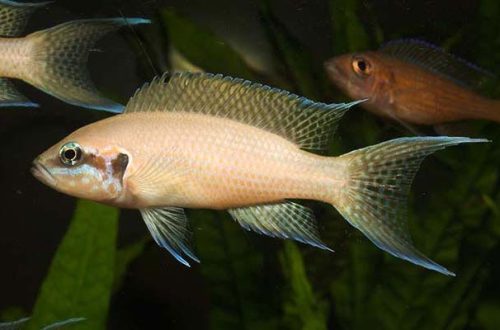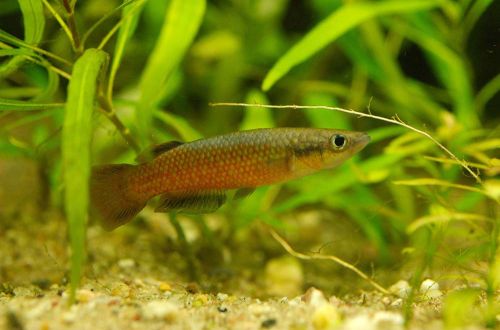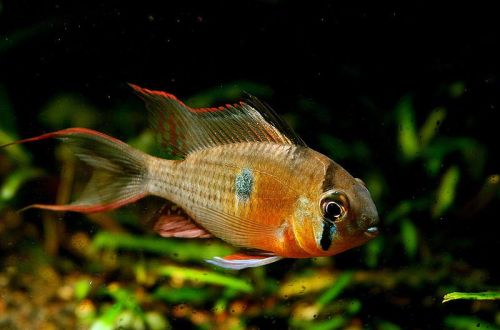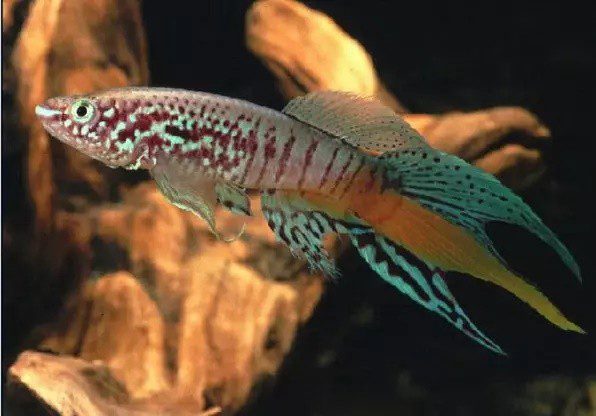
Afiosemion blue
Afiosemion blue, scientific name Fundulopanchax sjostedti, belongs to the Nothobranchiidae family. Previously belonged to the genus Aphyosemion. This fish is sometimes sold under the names Blue Pheasant or Gularis, which are translations and transcriptions respectively from the English trade name Blue gularis.

Probably the largest and brightest representative of the Killy fish group. It is considered an unpretentious species. However, the extreme quarrelsomeness of males somewhat complicates the maintenance and breeding.
Contents
Habitat
The fish comes from the African continent. Inhabits the Niger Delta in southern and southeastern Nigeria and southwestern Cameroon. It occurs in temporary swamps formed by river floods, in wetlands of coastal tropical forests.
Description
This is the largest representative of the Killy fish group. Adults reach a length of about 13 cm. The maximum size is characteristic of males, which also have a brighter variegated color compared to females.
There are several artificially bred strains that differ in the predominance of one color or another. The most popular are the bright orange, yellow fish known as the “USA blue” variety. Why the name “blue” (blue) is present remains a mystery.
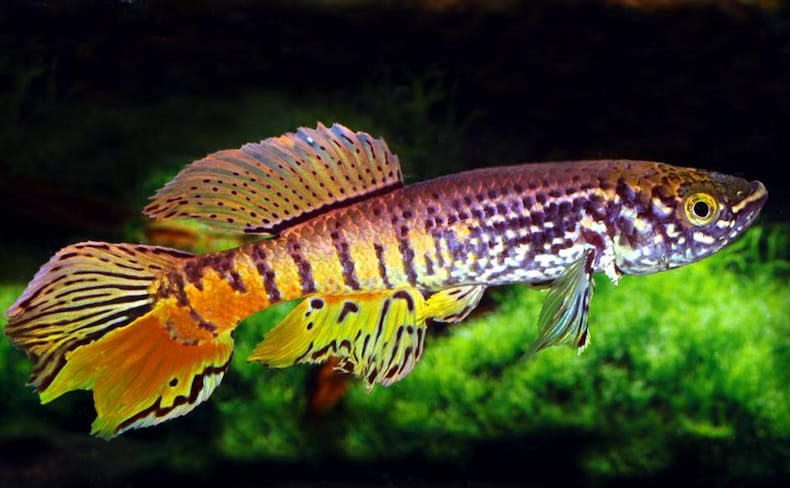
In addition to the impressive coloring, Afiosemion blue attracts attention with large fins that are similar in color to the body. Massive tail in yellow-orange color resembles flames.
Behavior and Compatibility
Males are extremely hostile towards each other. When two or more males are kept together, spacious aquariums of several hundred liters are used to exclude constant contact between them.
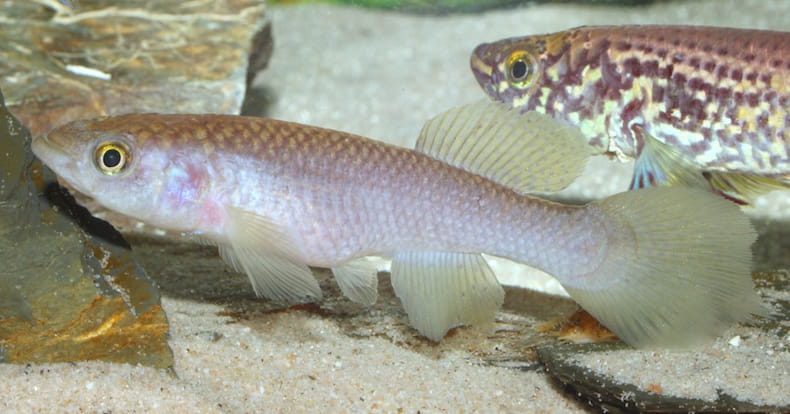
Females are more peaceful and get along well with each other. In a small tank, it is recommended to maintain a group size of one male and 2–3 females. If the female is alone, then she may be attacked by the male.
Afiosemion blue is compatible with species of comparable size. For example, peaceful cichlids, large characins, corridors, plecostomuses and others will become good neighbors.
Brief information:
- The volume of the aquarium – from 80 liters.
- Temperature – 23-26°C
- Value pH — 6.0–8.0
- Water hardness – 5–20 dGH
- Substrate type – any
- Lighting – subdued
- Brackish water – no
- Water movement – little or no
- The size of the fish is up to 13 cm.
- Nutrition – foods high in protein
- Temperament – conditionally peaceful
- Harem-type content with one male and several females
Maintenance and care, arrangement of the aquarium
For a group of 3-4 fish, the optimal size of the aquarium starts from 80 liters. In the design, it is important to use dark peat-based soil or similar substrates that will additionally acidify the water. Fragments of stained wood, natural snags, branches, tree leaves should be placed at the bottom. Be sure to have aquatic plants, including floating to scatter light.
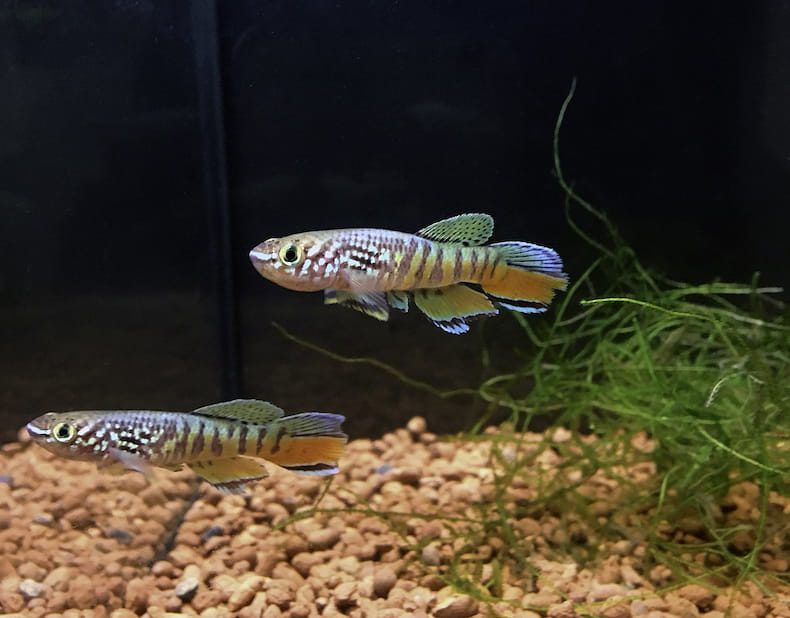
The aquarium should be equipped with a lid or other device that prevents fish from jumping out.
This species is universal in terms of water parameters. Despite the marsh origin, Afiosemion blue is able to adapt to an alkaline environment with high GH values. Thus, the range of acceptable containment conditions is very wide.
Food
Prefers foods rich in protein. On occasion, it can eat fry and other very small fish. The basis of the diet should be fresh, frozen or live foods, such as daphnia, bloodworms, large brine shrimp. Dry food should only be considered as a supplement.
Breeding and reproduction
If there are many Afiosemion blues (several males) living in the aquarium, or other species are kept together with them, then breeding is recommended to be carried out in a separate tank.
One male and several fish are placed in a spawning aquarium – this is the minimum group for keeping.
The equipment of the breeding tank includes a special substrate, which can be easily removed later. This can be fibrous soil based on coconut shells, a thick layer of aquatic mosses that you won’t be sorry to get and dry, and other materials, including artificial ones. Other design does not matter.
A simple airlift filter is sufficient as a filtration system.
Water parameters should have acidic and mild pH and GH values. The temperature does not exceed 21°C for most Afiosemion blue strains. The exception is the “USA blue” variety, which, on the contrary, requires temperatures below 21°C.
In a favorable environment and a balanced diet, spawning will not be long in coming. In an aquarium, fish will lay eggs anywhere. It is important to detect them in time and transplant adult fish back into the main aquarium, or remove the substrate and transfer it to a separate tank. Otherwise, some of the eggs will be eaten. The tank or spawning aquarium with eggs should be kept in the dark (eggs are sensitive to light) and checked daily for fungus. If infection is detected, the affected eggs are removed with a pipette. The incubation period lasts about 21 days.
It is worth noting that the eggs can be without water in a dry substrate for up to 12 weeks. This feature is due to the fact that in nature, fertilized eggs often end up in temporary reservoirs that dry up during the dry season.



